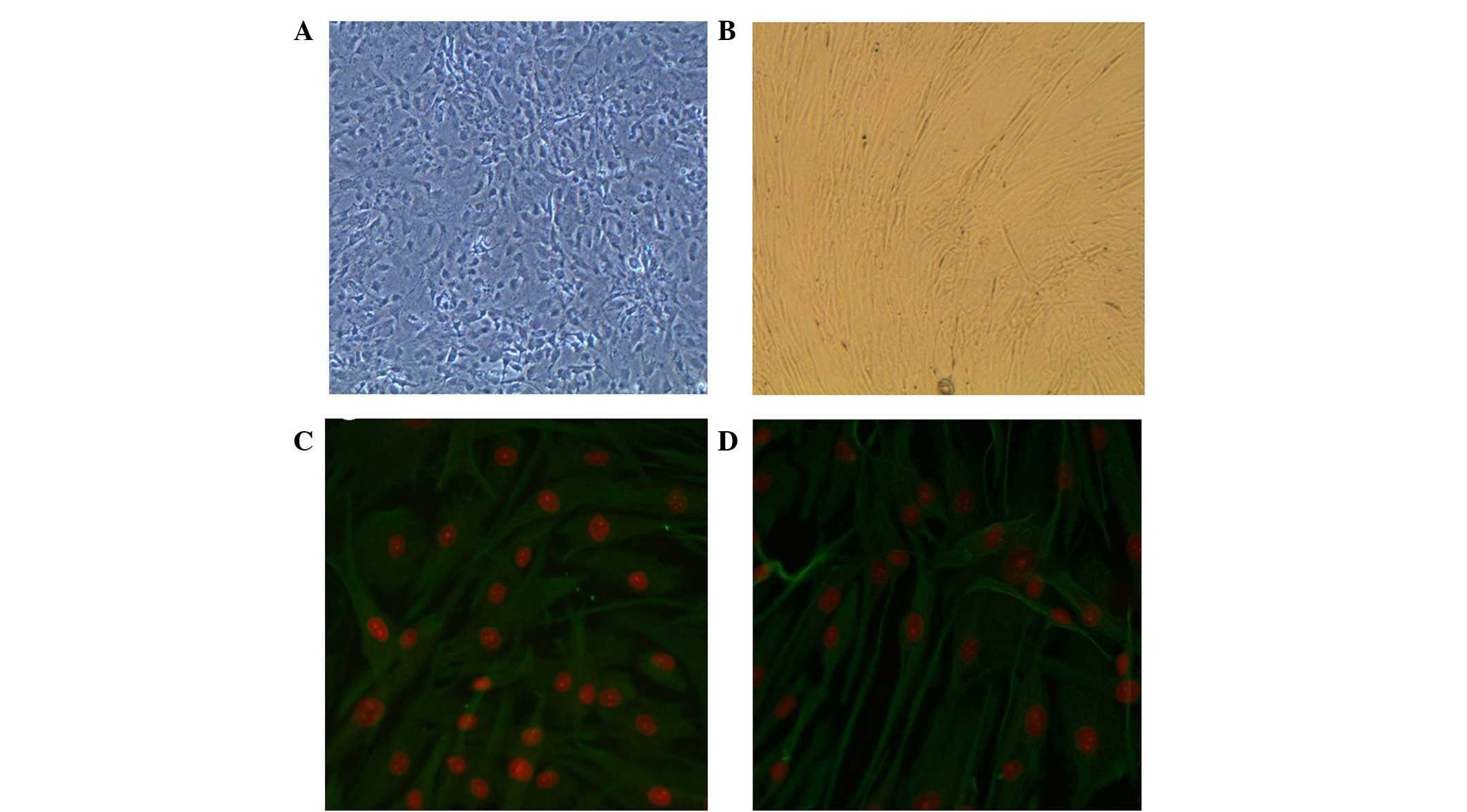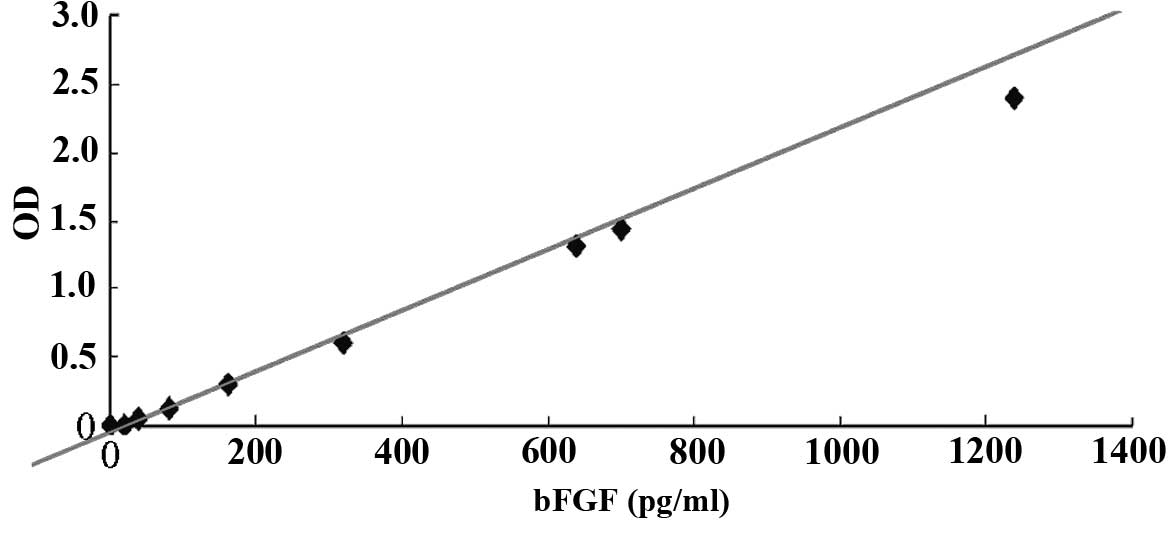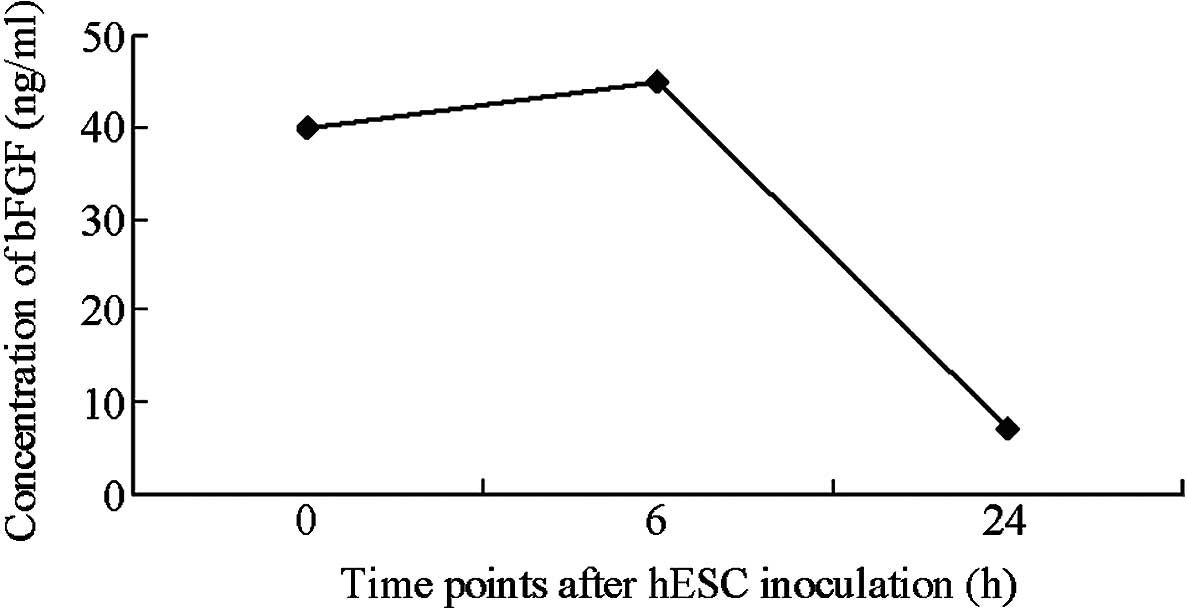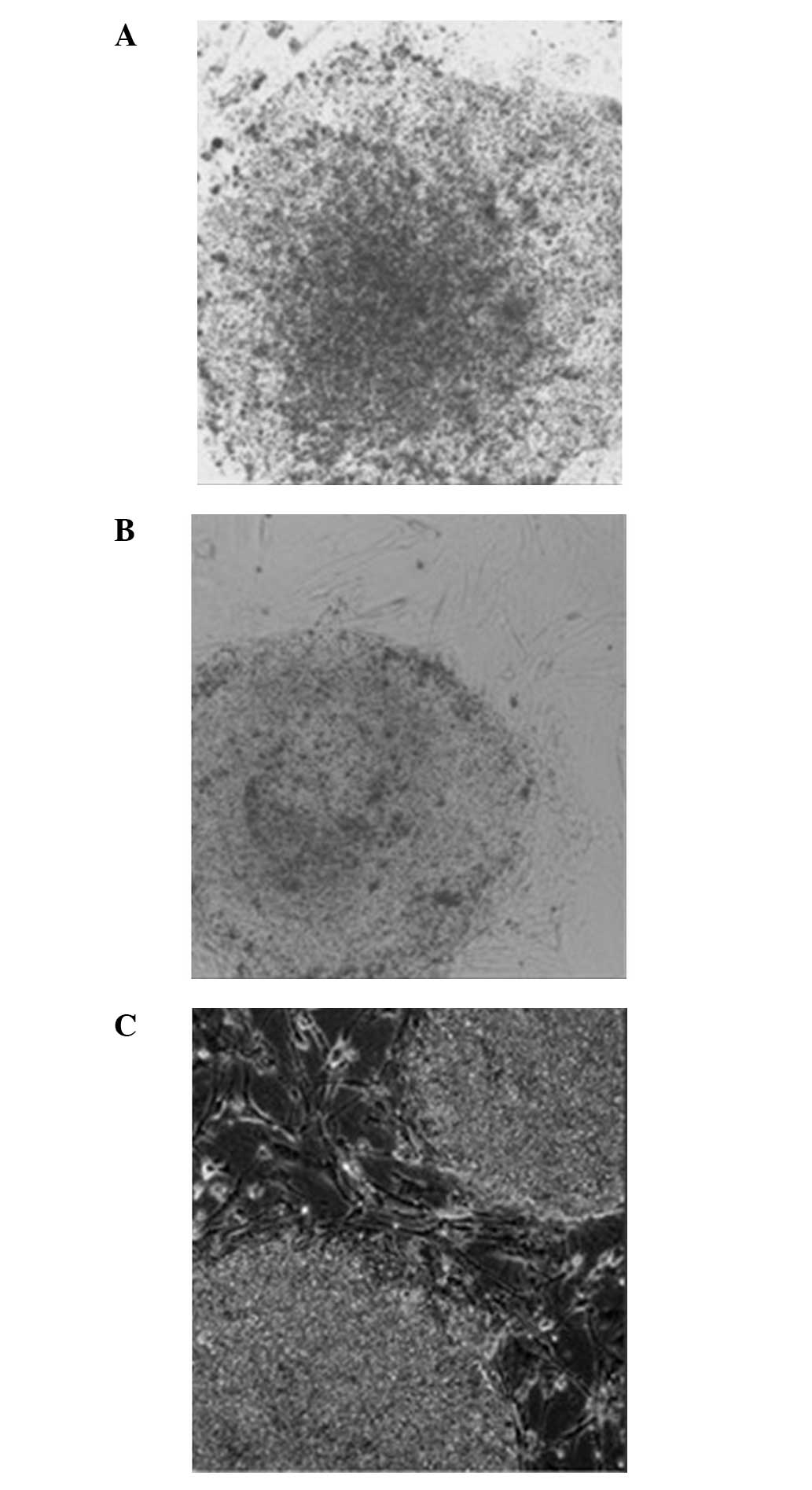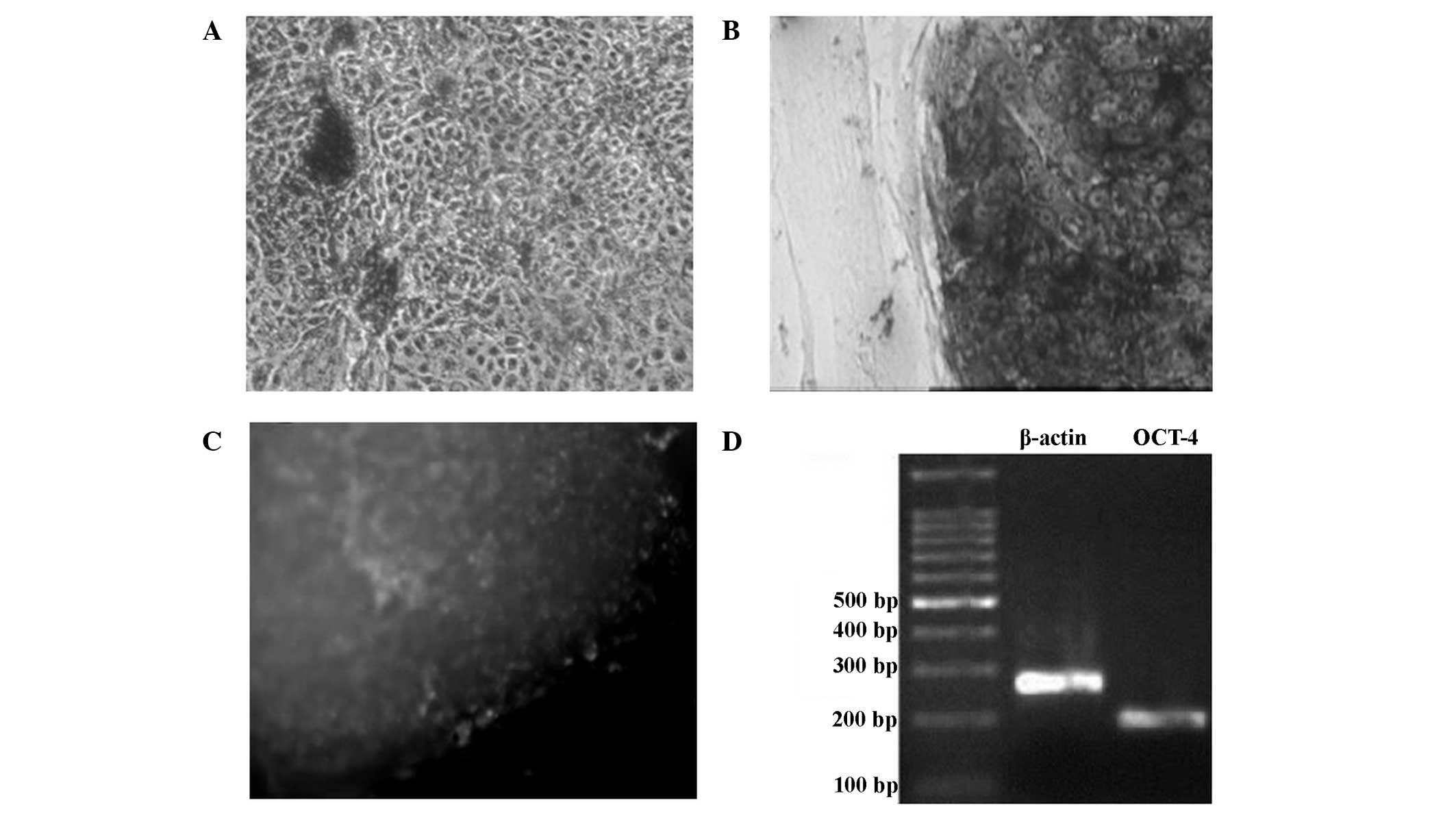|
1
|
Whyte M, Hubbard R, Meliconi R, Whidborne
M, Eaton V, Bingle C, Timms J, Duff G, Facchini A, Pacilli A, et
al: Increased risk of fibrosing alveolitis associated with
interleukin-1 receptor antagonist and tumor necrosis factor-alpha
gene polymorphisms. Am J Respir Crit Care Med. 162:755–758. 2000.
View Article : Google Scholar : PubMed/NCBI
|
|
2
|
Bjorklund LM, Sánchez-Pernaute S, Chung S,
Andersson T, Chen IY, McNaught KS, Brownell AL, Jenkins BG,
Wahlestedt C, Kim KS and Isacson O: Embryonic stem cells develop
into functional dopaminergic neurons after transplantation in a
Parkinson rat model. Proc Natl Acad Sci USA. 99:2244–2349. 2002.
View Article : Google Scholar
|
|
3
|
Brüstle O, Jones KN, Learish RD, Karram K,
Choudhary K, Wiestler OD, Duncan ID and McKay RD: Embryonic stem
cell-derived glial precursors: A source of myelinating transplants.
Science. 285:754–756. 1999. View Article : Google Scholar : PubMed/NCBI
|
|
4
|
Liu S, Qu Y, Stewart TJ, Howard MJ,
Chakrabortty S, Holekamp TF and McDonald JW: Embryonic stem cells
differentiate into oligodendrocytes and myelinate in culture and
after spinal cord transplantation. Proc Natl Acad Sci USA.
97:6126–6131. 2000. View Article : Google Scholar : PubMed/NCBI
|
|
5
|
Amit M, Margulets V, Segev H, Shariki K,
Laevsky I, Coleman R and Itskovitz-Eldor J: Human feeder layers for
human embryonic stem cells. Biol Reprod. 68:2150–2156. 2003.
View Article : Google Scholar : PubMed/NCBI
|
|
6
|
Hovatta O, Mikkola M, Gertow K, Strömberg
AM, Inzunza J, Hreinsson J, Rozell B, Blennow E, Andäng M and
Ahrlund-Richter L: A culture system using human foreskin
fibroblasts as feeder cells allows production of human embryonic
stem cells. Hum Reprod. 18:1404–1409. 2003. View Article : Google Scholar : PubMed/NCBI
|
|
7
|
Inzunza J, Gertow K, Strömberg MA,
Matilainen E, Blennow E, Skottman H, Wolbank S, Ahrlund-Richter L
and Hovatta O: Derivation of human embryonic stem cell lines in
serum replacement medium using postnatal human fibroblasts as
feeder cells. Stem Cells. 23:544–549. 2005. View Article : Google Scholar : PubMed/NCBI
|
|
8
|
Nieto A, Cabrera CM, Catalina P, Cobo F,
Barnie A, Cortés JL, del Barroso Jesus A, Montes R and Concha A:
Effect of mitomycin-C on human foreskin fibroblasts used as feeders
in human embryonic stem cells: Immunocytochemistry MIBI score and
DNA ploidy and apoptosis evaluated by flow cytometry. Cell Biol
Int. 31:269–278. 2007. View Article : Google Scholar : PubMed/NCBI
|
|
9
|
Thomson JA, Itskovitz-Eldor J, Shapiro SS,
Waknitz MA, Swiergiel JJ, Marshall VS and Jones JM: Embryonic stem
cell lines derived from human blastocytes. Science. 282:1145–1147.
1998. View Article : Google Scholar : PubMed/NCBI
|
|
10
|
Troy TC, Rahbar R, Diker B and Turksen K:
Immunolocalization in the epidermis. Methods Mol Biol. 289:113–120.
2005.PubMed/NCBI
|
|
11
|
Saxena S, Hanwate M, Deb K, Sharma V and
Totey S: FGF2 secreting human fibroblast feeder cells: A novel
culture system for human embryonic stem cells. Mol Reprod Dev.
75:1523–1532. 2008. View Article : Google Scholar : PubMed/NCBI
|
|
12
|
Gavrilov S, Marolt D, Douglas NC, Prosser
RW, Khalid I, Sauer MV, Landry DW, Vunjak-Novakovic G and
Papaioannou VE: Derivation of two new human embryonic stem cell
lines from nonviable human embryos. Stem Cells Int.
2011:7653782011. View Article : Google Scholar : PubMed/NCBI
|
|
13
|
Vaajasaari H, Ilmarinen T, Juuti-Uusitalo
K, Rajala K, Onnela N, Narkilahti S, Suuronen R, Hyttinen J,
Uusitalo H and Skottman H: Toward the defined and xeno-free
differentiation of functional human pluripotent stem cell-derived
retinal pigment epithelial cells. Mol Vis. 17:558–575.
2011.PubMed/NCBI
|
|
14
|
Ding Y, Yang H, Yu L, Xu CL, Zeng Y, Qiu Y
and Li DS: Feeder-free and xeno-free culture of human pluripotent
stem cells using UCBS matrix. Cell Biol Int. 39:1111–1119. 2015.
View Article : Google Scholar : PubMed/NCBI
|
|
15
|
Coulombe PA and Wong I: Cytoplasmic
intermediate filaments revealed as dynamic and multipurpose
scaffolds. Nat Cell Biol. 6:699–706. 2004. View Article : Google Scholar : PubMed/NCBI
|
|
16
|
Xu C, Inokuma MS, Denham J, Golds K, Kundu
P, Gold JD and Carpenter MK: Feeder-free growth of undifferentiated
human embryonic stem cells. Nat Biotechnol. 19:971–974. 2001.
View Article : Google Scholar : PubMed/NCBI
|
|
17
|
Hirai H, Karian P and Kikyo N: Regulation
of embryonic stem cell self-renewal and pluripotency by leukaemia
inhibitory factor. Biochem J. 438:11–23. 2011. View Article : Google Scholar : PubMed/NCBI
|
|
18
|
Salli U, Fox TE, Carkaci-Salli N, Sharma
A, Robertson GP, Kester M and Vrana KE: Propagation of
undifferentiated human embryonic stem cells with nano-liposomal
ceramide. Stem Cells Dev. 18:55–65. 2009. View Article : Google Scholar : PubMed/NCBI
|
|
19
|
Yabut O and Bernstein HS: The promise of
human embryonic stem cells in aging-associated diseases. Aging
(Albany NY). 3:494–508. 2011. View Article : Google Scholar : PubMed/NCBI
|
|
20
|
Huang YC, Wang TW, Sun JS and Lin FH:
Investigation of mitomycin-C-treated fibroblasts in 3-D collagen
gel and conditioned medium for keratinocyte proliferation. Artif
Organs. 30:150–159. 2006. View Article : Google Scholar : PubMed/NCBI
|
|
21
|
Zhou YP, Rochat A, Hatzfeld A, Peiffer I,
Barbet R, Hatzfeld J and Li ML: bFGF-stimulated MEF-conditioned
medium is capable of maintaining human embryonic stem cells. Fen Zi
Xi Bao Sheng Wu Xue Bao. 42:193–199. 2009.(In Chinese). PubMed/NCBI
|
|
22
|
Xu HF and Suming Z: Feeder-free growth of
human embryonic stem cells supported by basic fibroblast growth
factor. Zhong Guo Zu Zhi Gong Cheng Yan Jiu Yu Lin Chuang Kang Fu.
14:1111–1114. 2010.(In Chinese).
|
|
23
|
Chiba S, Lee YM, Zhou W and Freed CR:
Noggin enhances dopamine neuron production from human embryonic
stem cells and improves behavioral outcome after transplantation
into Parkinsonian rats. Stem Cells. 26:2810–2120. 2008. View Article : Google Scholar : PubMed/NCBI
|
|
24
|
Eiselleova L, Peterkova I, Neradil J,
Slaninova I, Hampl A and Dvorak P: Comparative study of mouse and
human feeder cells for human embryonic stem cells. Int J Dev Biol.
52:353–363. 2008. View Article : Google Scholar : PubMed/NCBI
|
|
25
|
Li SS, Liu YH, Tseng CN, Chung TL, Lee TY
and Singh S: Characterization and gene expression profiling of five
new human embryonic stem cell lines derived in Taiwan. Stem Cells
Dev. 15:532–555. 2006. View Article : Google Scholar : PubMed/NCBI
|
|
26
|
Mandal A, Tipnis S, Pal R, Ravindran G,
Bose B, Patki A, Rao MS and Khanna A: Characterization and in vitro
differentiation potential of a new human embryonic stem cell line,
ReliCellhES1. Differentiation. 74:81–90. 2006. View Article : Google Scholar : PubMed/NCBI
|
|
27
|
Lee JB, Lee JE, Park JH, Kim SJ, Kim MK,
Roh SI and Yoon HS: Establishment and maintenance of human
embryonic stem cell lines on human feeder cells derived from
uterine endometrium under serum-free condition. Biol Reprod.
72:42–49. 2005. View Article : Google Scholar : PubMed/NCBI
|
|
28
|
Genbacev O, Krtolica A, Zdravkovic T,
Brunette E, Powell S, Nath A, Caceres E, McMaster M, McDonagh S, Li
Y, et al: Serum-free derivation of human embryonic stem cell lines
on human placental fibroblast feeders. Fertil Steril. 83:1517–1529.
2005. View Article : Google Scholar : PubMed/NCBI
|
|
29
|
Richards M, Tan S, Fong CY, Biswas A, Chan
WK and Bongso A: Comparative evaluation of various human feeders
for prolonged undifferentiated growth of human embryonic stem
cells. Stem Cells. 21:546–556. 2003. View Article : Google Scholar : PubMed/NCBI
|
|
30
|
Xu C, Jiang J, Sottile V, McWhir J,
Lebkowski J and Carpenter MK: Immortalized fibroblast-like cells
derived from human embryonic stem cells support undifferentiated
cell growth. Stem Cells. 22:972–980. 2004. View Article : Google Scholar : PubMed/NCBI
|
|
31
|
Wang Q, Fang ZF, Jin F, Lu Y, Gai H and
Sheng HZ: Derivation and growing human embryonic stem cells on
feeders derived from themselves. Stem Cells. 23:1221–1227. 2005.
View Article : Google Scholar : PubMed/NCBI
|
|
32
|
Stojkovic P, Lako M, Stewart R, Przyborski
S, Armstrong L, Evans J, Murdoch A, Strachan T and Stojkovic M: An
autogeneic feeder cell system that efficiently supports growth of
undifferentiated human embryonic stem cells. Stem Cells.
23:306–314. 2005. View Article : Google Scholar : PubMed/NCBI
|



